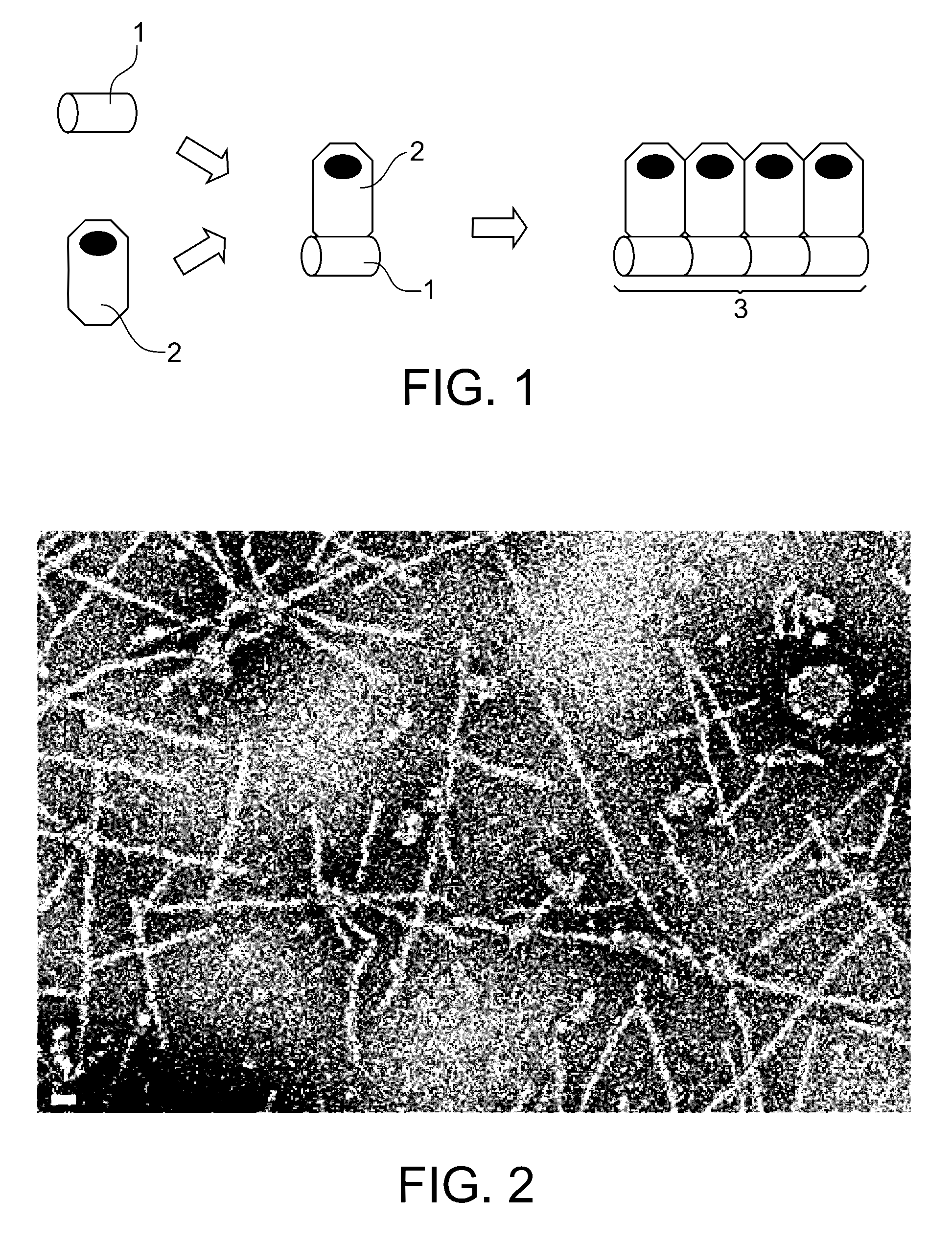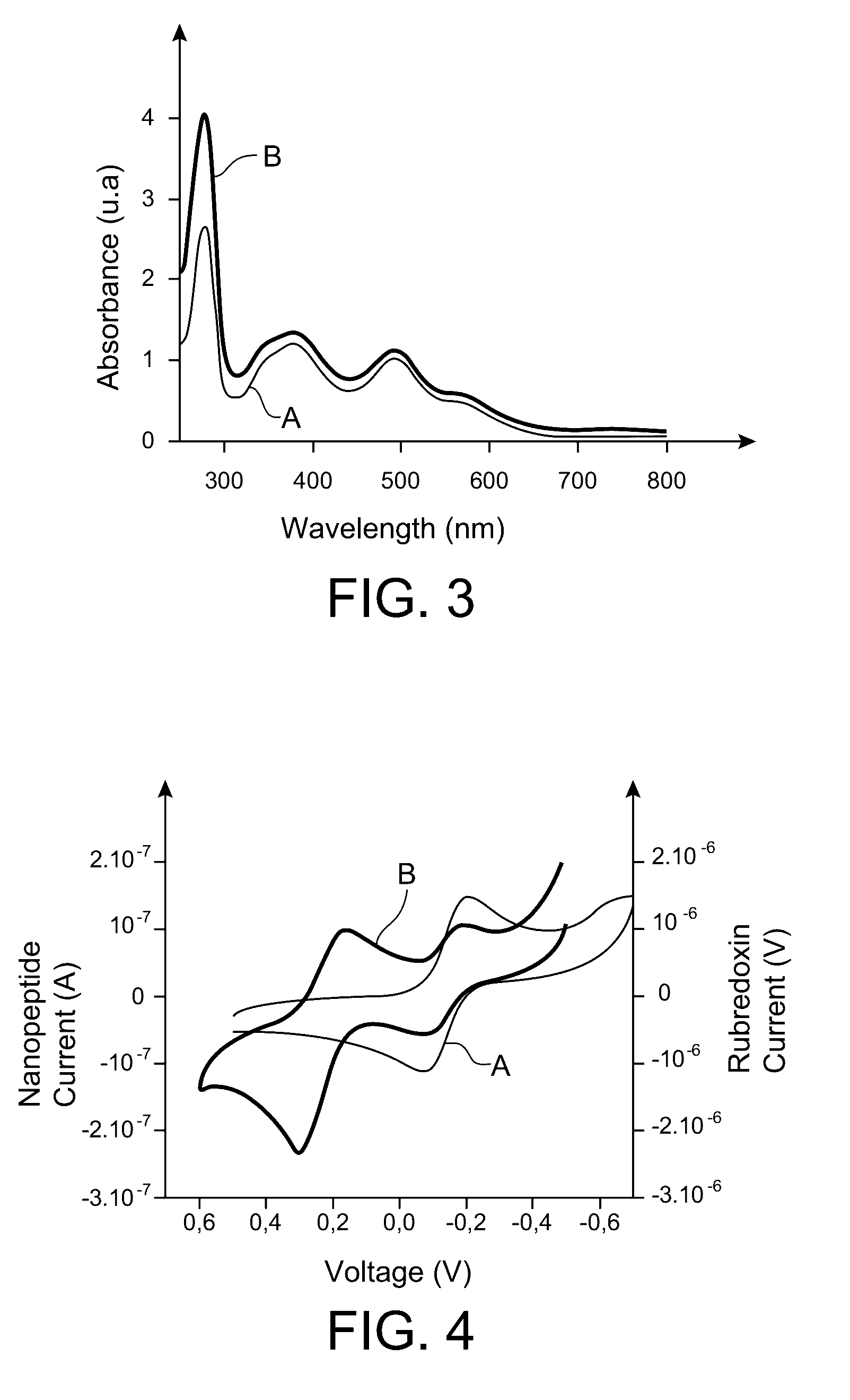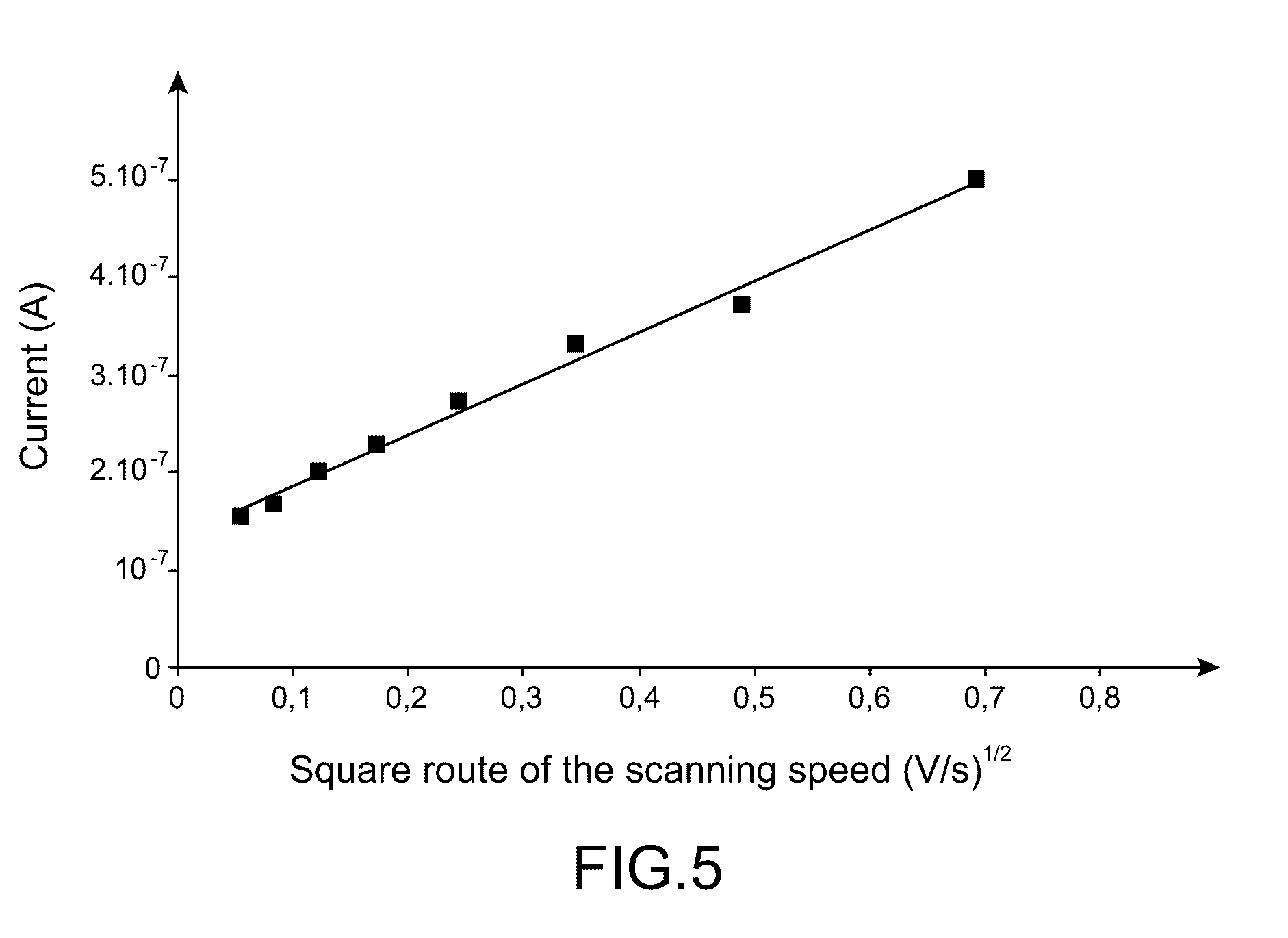Biodegradable electroconducting nanowire, method of manufacture and uses thereof
a nanowire, biodegradable technology, applied in the field of electroconducting nanowires, can solve the problems of inorganic nanowires that are obviously not biodegradable, lack of data in the literature on potential nanoscopic applications of this type of nanowire, and presence in cellular tissues
- Summary
- Abstract
- Description
- Claims
- Application Information
AI Technical Summary
Benefits of technology
Problems solved by technology
Method used
Image
Examples
example 1
Formation of Electroconducting Nanowires According to the Invention
[0128]Electroconducting nanowires are formed by expression, in cells of Escherichia coli, of chimeric proteins each comprising the aforementioned sequence of amino acids SEQ ID NO: 9, to which has been added, on the side of the C-terminal asparagine residue of this sequence, a tag composed of 6 histidine residues intended to enable the purification by IMAC (Immobilized Metal Affinity Chromatography), and, more specifically on a nickel column, of the chimeric proteins thereby expressed.
[0129]Chimeric proteins thus have the following sequence of amino acids:
[0130]
(sequence ID NO: 10)MAIWQCTVCGYKYDEDKEKKKFEDLPADYKCPVCGAKKEMFKKSMEIDAIVGRNSAKDIRTEERARVQLGNVVTAAALHGGIRISDQTTNSVETVVGKGESRVLIGNEYGGKGFWDNHHHHHH.
[0131]To do this, the nucleotide sequence encoding for the peptide with prion domain:
[0132]
(sequence ID NO: 11)ATGGAGATCGACGCGATTGTGGGAAGGAATTCCGCCAAGGATATCAGAACAGAGGAACGTGCAAGGGTCCAGCTCGGCAATGTTGTCACTGCGGCAGCCCTACATGG...
example 2
Characterisation and Properties of Electroconducting Nanowires According to the Invention
[0155]2.1. Fibrillar Structure of the Nanowires
[0156]FIG. 3 shows an image taken in transmission electron microscopy by negative coloration with uranyl salt of the nanowires obtained in example 1 and on which the scale, which is represented by the rectangle situated in the bottom left hand corner of this image, corresponds to 20 nm.
[0157]This figure shows that the nanowires have, as expected, a fibrillar structure and that they have substantially a thickness of 8 nm for a length ranging from 200 nm to 2 μm.
[0158]2.2. Electroconducting Properties of Nanowires
[0159]In order that the nanowires obtained in example 1 above can conduct electrons on either side of the amyloid fibre which constitutes them, it is important that the peptide sequences derived from the rubredoxin of Methanococcus voltae, which functionalize this amyloid fibre, are correctly folded on their iron-sulphur centre.
[0160]The rubr...
PUM
| Property | Measurement | Unit |
|---|---|---|
| length | aaaaa | aaaaa |
| thickness | aaaaa | aaaaa |
| thickness | aaaaa | aaaaa |
Abstract
Description
Claims
Application Information
 Login to View More
Login to View More - R&D
- Intellectual Property
- Life Sciences
- Materials
- Tech Scout
- Unparalleled Data Quality
- Higher Quality Content
- 60% Fewer Hallucinations
Browse by: Latest US Patents, China's latest patents, Technical Efficacy Thesaurus, Application Domain, Technology Topic, Popular Technical Reports.
© 2025 PatSnap. All rights reserved.Legal|Privacy policy|Modern Slavery Act Transparency Statement|Sitemap|About US| Contact US: help@patsnap.com



